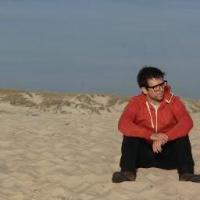I have been browsing these forums for quite a while and reading over posts by members, which have helped me get a better enderstanding of VistaPE and other various 'booting methods'. You definitely seem to know a substantial amount about this topic , and I've wasted days and had a ton of frustration with inconsistencies and lack of information into what I've been researching. I'm hoping some of you chaps could help me out if at all possible.
Now to the juice...
I need to have the following functionality on a bootable USB thumb drive:
- USB 2.0 speeds
- Ability to execute command line utilities and commands [DOS shell]
- NTFS read/write
- Partitionable drive
It's just a project I've set out to do, and I need a little help. It may seem rediculous, but I use it to backup files off systems which have no boot capability [ruined FS, registry, BSOD's, corrupt MBR/bootector]. Transferring many GB's over USB 1.x takes a VERY LONG time.
After I am able to achieve this, I am also looking at customizing a VistaPE build, while using USB 2.0 during bootup. This will come later though.
USB 2.0 speeds
This is the main issue; everything else can be done, although a little slowly. I've used two drivers under DOS known as usbaspi.sys [detects USB media] and di1000dd.sys [maps media to drive letters, acoompanies first driver]
Info on these can be found here: http://www.computing...orum/13288.html
When these are loaded from RAM after a copy from the bootable USB, NTSDOS will not detect and NTS drives on the system. When I load these via a bootable floppy with the USB still connected, two out of three are detected. Seems a little weird, and always booting via floppy to install drivers is just not going to happen in my opinion; it's too impractical, very slow, prone to corruption and most new systems don't come with a floppy drive.
I found an alternative, which I extracted from the XPe SP2 FP 2007 setup, called ufdprep.exe. I tried it under VMWare and it booted without problems, although I'm yet to verify if it runs at USB 2.0 speeds. One hiccup though, it will boot if formatted as NTFS, but won't if formatted as FAT32 [even though I've been able to boot from a FAT32 USB using other bootsectors, and others have had success: http://www.911cd.net...l=petousb fat32]
Now, if I have a NTFS formatted drive, I either need to have a second partition as FAT16/FAT32 or somehow use DOS commands on a NTFS drive [which isn't possible, is it? :thumbsup:]. I tried adding a DOS floppy bootsector to NTLDR [which I copied onto the root of the partition I had formatted with ufdprep], following the steps in the following two pages as best as I could:
http://www.bcpl.net/...-dual-boot.html
http://www.tburke.ne...cking_guide.htm
The bootsector thinks the floppy drive is where it should be heading to, which in VMWare works, but in reality does not ["Disk I/O error..."]. None of these, either real of virtual, are doing what I want it to do. I want the bootsector to look for the DOS bootdisk files that I have copied onto the second partition on the USB [formatted as a FAT variant].
So I try to install DOS onto the USB's FAT partition [which I had set as active] and what do you know, it formats my OS hard drive [even though it was NTFS, which I thought it wouldn't recognise as a valid drive]. So, after all my work on this was stored on that HDD, I'm essentially back to square one after an OS reinstall. I really don't want to try to find out what I had been working with again and start re-fiddling.
Ability to execute command line utilities [DOS shell]
No worries here, I've been using HP's USB Disk Storage Format Tool to write a bootsector/MBR to the drive. After that I just copy over whatever files I want to use and they work fine. The drawback here is no USB 2.0 support, which I'm after.
NTFS read/write
I have Sysinternals' NTFSDOS Professional which works under DOS for the most part. The part where it doesn't work is when I load the USB 2.0 drivers via both methods described above. NTFS partitions are mounted and they are easily accessible if those USB drivers [usbaspi.sys and di1000dd.sys] aren't installed beforehand. The system locks up if I try to load those drivers after I have started NTFSDOS Professional.
Partitionable drive
I have a driver that does this fine, but I have to change drivers back to default consistently to be able to use some tools [drive is recognised as 'non removable' when the custom driver is installed]. Is there anything out there that will allow me to hotswap drivers or get the drive recognised as a removable disk, yet remain partitionable? [The first is the preferrred, as I'm sure Windows makes it completely impossible to partition and access removable drives
---------------------------------------------------------------------------------------------------------
So, after scanning all that mess ^, any ideas? :tabletalk:
If there's any more info you need, please, just say the word. I should be able to recall most of what I have used. My sincere thanks goes to people who have read this opst, and even moreso to those who are able to throw some ideas out there. :D
Oh, and while I think of it, what's the difference between a Master Boot Record and Boot Sector? Im under the *impression* that the MBR resides in the bootsector.... if so, what's the point of being able to isolate them?
EDIT: If you have read through the rest of the posts in this thread, you will see that I have solved the problem and created a tutorial on how to achieve the same results yourself. I have attached the tutorial to this post for easy access :D















